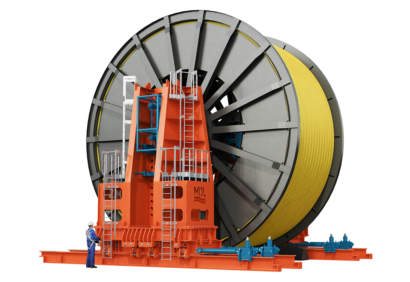Flex Lay Myths: Redundant reel drives - part 2
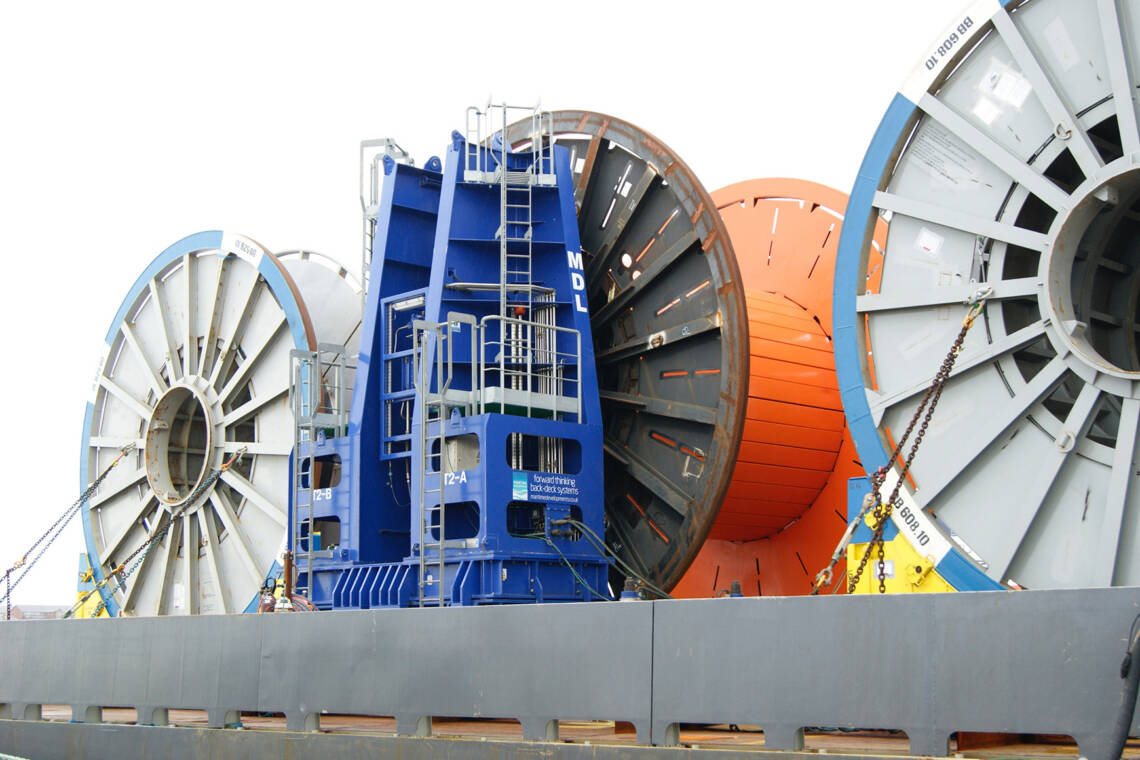
Putting the benefits in motion: Unveiling the true potential of RDS
Previously, we highlighted the distinction of RDS from other reel rotating methodologies. However, it's essential to understand that not all RDS are created equal.
Our portfolio comprises three generations of reel drive systems, each equipped with unique features that set them apart from the rest. Let's explore how the MDL range stands out by examining the journey of flexible products to deployment:
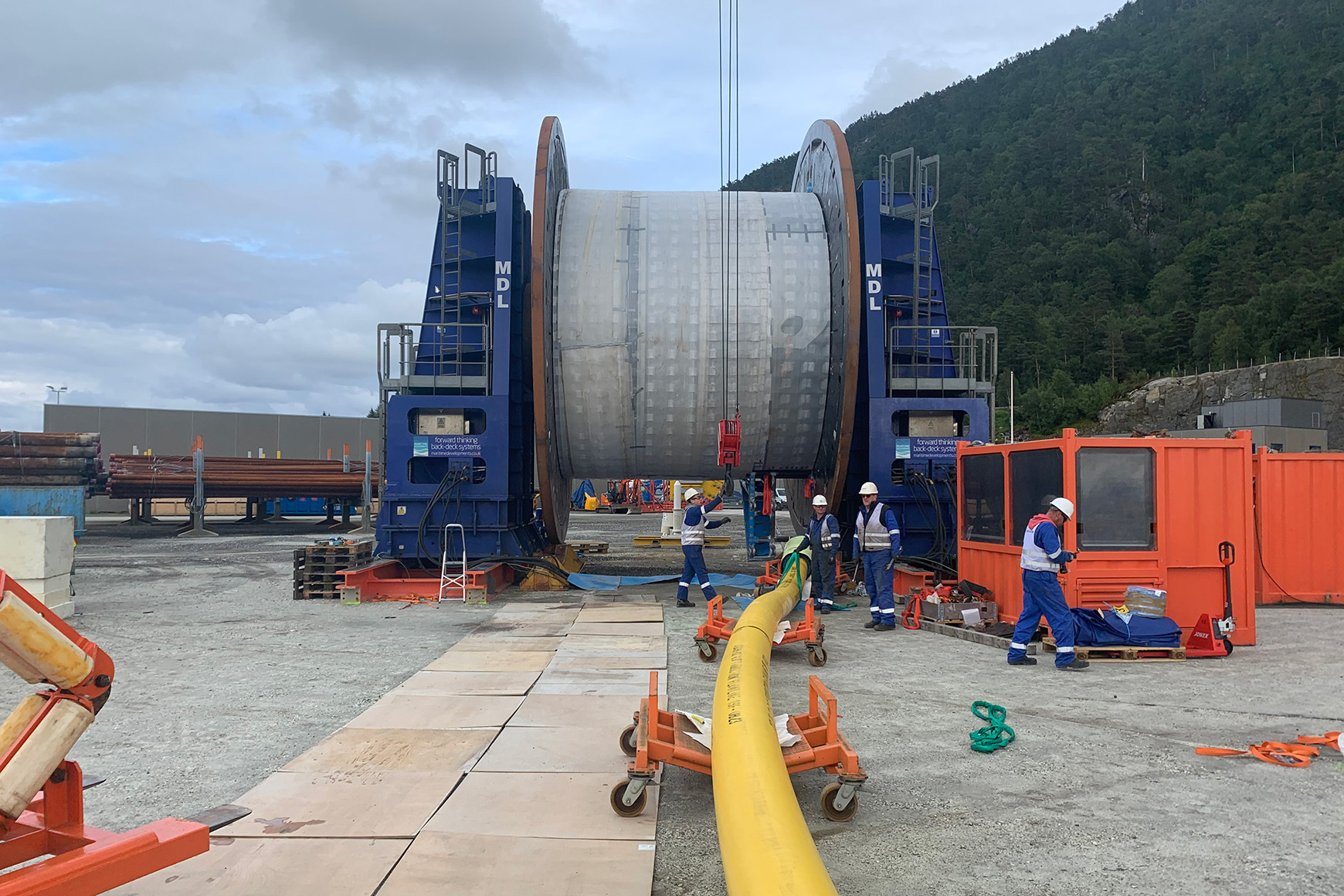
Step 1: Loading onto the Installation Reel
Transpooling the product onto the installation reel can be challenging, especially when done by third parties not involved with the offshore deployment scope. Poorly packed product often leads to time-consuming challenges offshore, requiring repeated pay-ins and pay-outs to achieve the required tension on the line. Inaccurate spooling direction and end termination positioning can also create alignment issues with offshore installation methods.
To address these concerns, correct packing on the reel while still onshore is crucial. Using an RDS ensures precise control over torque and speed, along with easy spooling direction changes to correct the layering and packing. All three generations of MDL reel drives boast a varied transpooling track record, each suitable for different reel diameter ranges.
In cases where onshore transpooling isn't feasible due to tight schedules or large product volumes, offshore transpooling becomes the best option. We offer a specialised package for such situations, featuring:
- Generation 1 RDS with a power pack that moves alongside the towers on the track system to handle a large number of reels efficiently. The small and compact nature of the system maximises the available back-deck space, whilst still being able to handle both small reels with custom drive interfaces, and larger Coflexip-type reels.
- Generation 2 RDS, capable of torquing in both directions, serving as a transpooling and installation tool in one.
- High-capacity installation reels, modified to handle polyester rope with an attached chain.
Find more on that spread here.
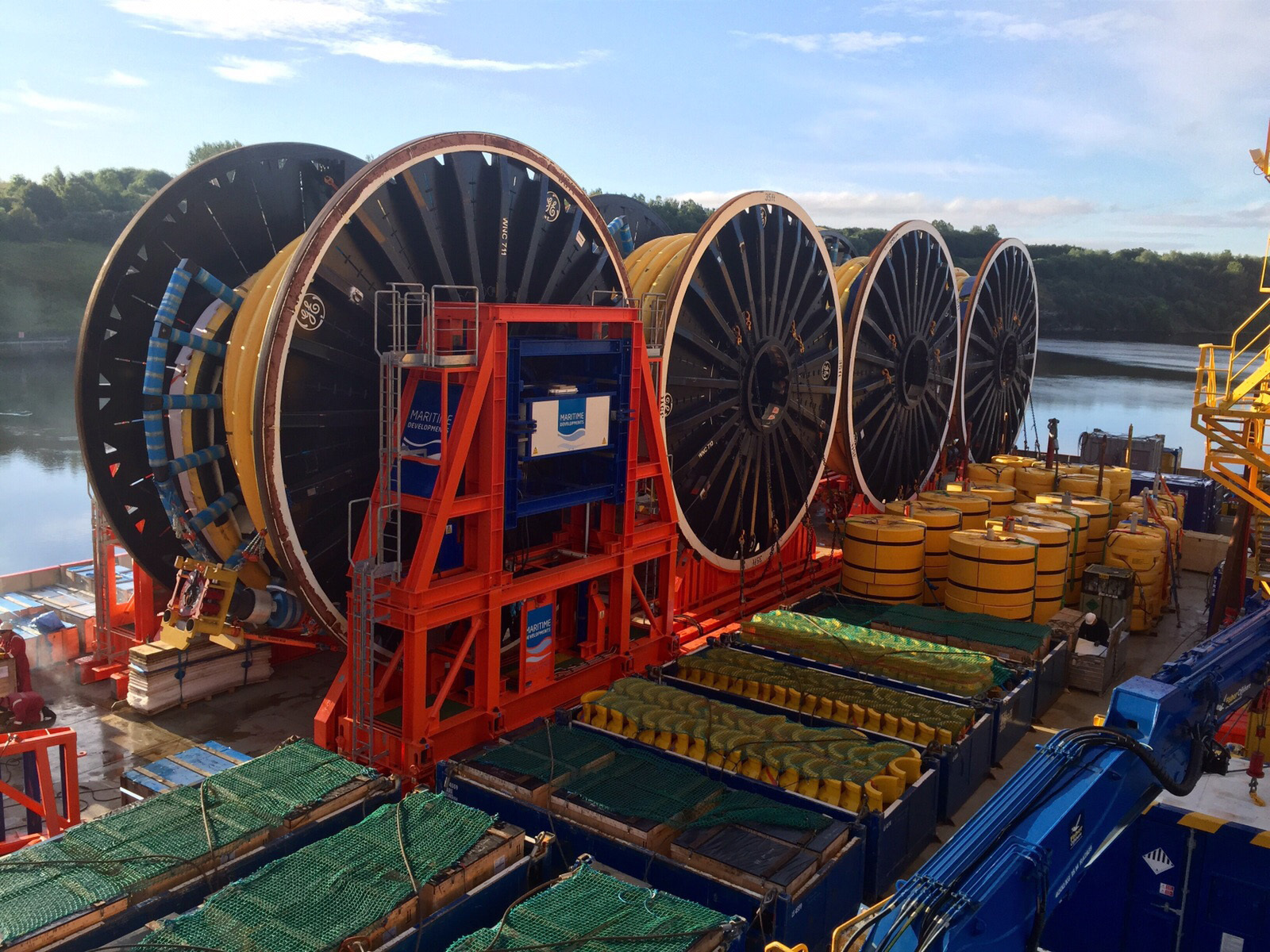
Step 2: Mobilisation onto the Installation Vessel
MDL Generation 3 RDS stands unparalleled when it comes to the mobilisation of the reel onto the installation vessel. By following our mantra of minimising idle time on a project, we developed the most compact and integrated RDS on the market, resulting in significantly faster mobilisation.
The features that expedite mobilisation include:
- HPU (Hydraulic Power Unit) built into one of the towers, reducing cable runs, lifts required, and overall system footprint.
- Independent towers that do not require tying or lashing together.
- Integrated Track and Cradle system, eliminating the need for welding down cradles, particularly advantageous for multi-reel projects.
- Lashing points on the RDS track system to secure the reels during transit, further reducing welding on the vessel's deck.
- Towers serving as sea fastening for the first reel, designed to withstand storm conditions, reducing the need for additional reel sea fastening.
These features translate into considerable time and cost savings during mobilisation, with an average of 12 hours saved per typical 3-reel project without interim reel swaps. Additionally, an extra 6 hours are saved when clearing the deck at the end of the job. Moreover, the narrow profile of Generation 3 RDS offers more free space on the vessel or the option to charter a smaller back deck, adding further time and cost benefits.
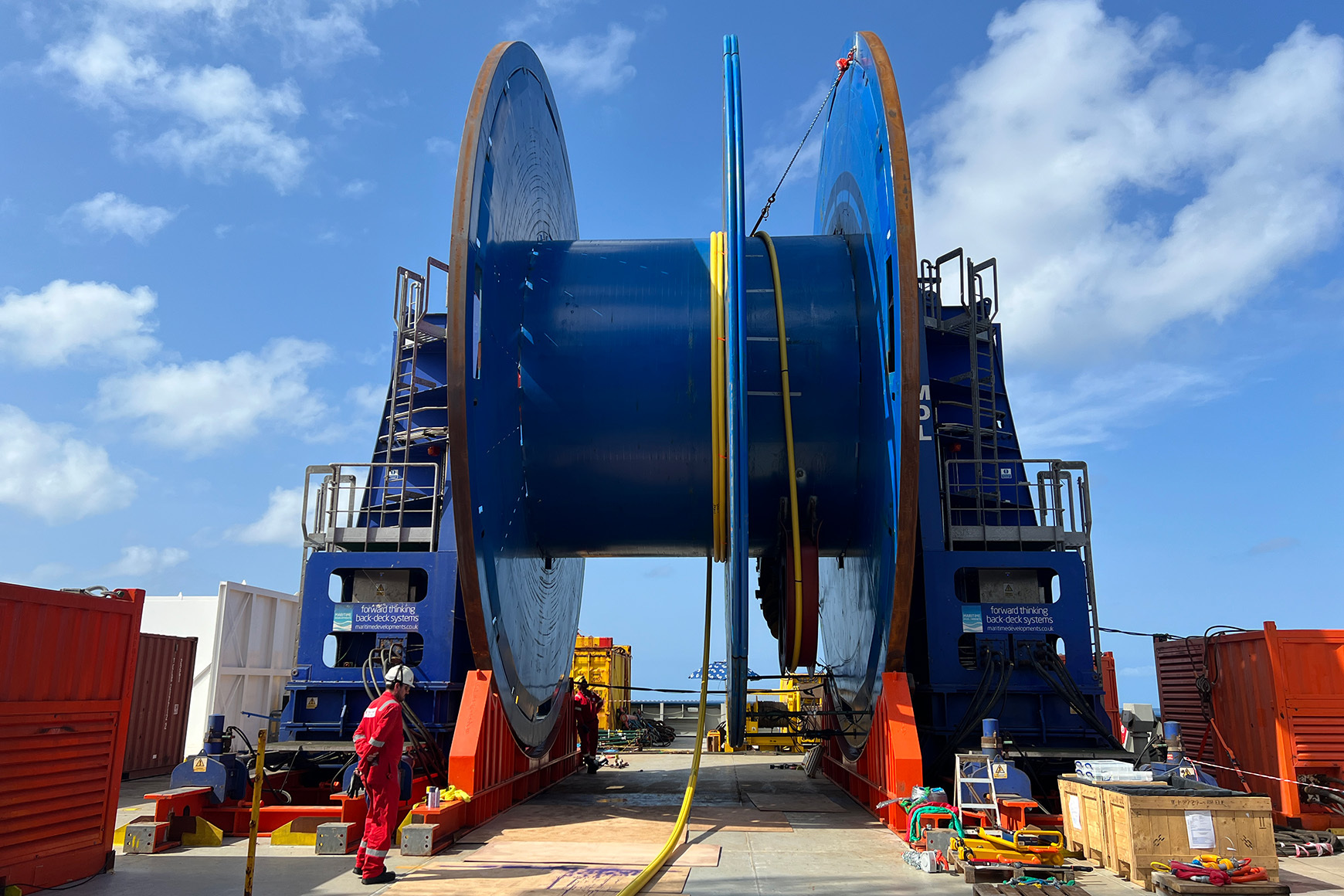
Step 3: Overboarding - Subsea Product Deployment
During the deployment of the product subsea, the reel drive comes into action, spinning the reel in the desired direction. MDL's automated skidding and clamping system, pioneered by our flagship Generation 2 RDS, facilitates the swift movement of towers between reels, approximately 4-6 times faster than systems from other providers. Additionally, Generation 2 RDS features the integrated grillage of Generation 3.
The MDL cradle system provides ample clearance from the bottom of the reel in the cradle to the deck during deployment, offering increased flexibility for reel installation sequences and handling large end fittings, even with larger reels.
Automation is key during deployment, delivering efficiency and safety benefits. Our wireless control system allows the operator to stand in the optimum position on deck, eliminating the need for personnel working at height, as seen with other systems. It also features remote dialup for service and maintenance, providing additional peace of mind.
Beyond "lay": the applicability of RDS in other operations
The advantages of RDS extend beyond "lay" operations. When it comes to product retrieval, such as mooring line replacements or infrastructure scrapping at the end of a field's life, Steps 2 and 3 deliver similar benefits in reverse order.
Even in disposal scenarios, where you need to release yourself from the burden of product disposal, MDL RDS can provide a solution, giving flexible products a new lease of life.
We hope we managed to bust some of the misconceptions around reel drive systems and help you see a new opportunity in using or owning a modern RDS. If you’re ready to improve your projects’ efficiency, get in touch so that we can identify what system suits your needs best.
- April 2024MDL supports Saipem on Greece INGS
- January 2024Preparation is key to a long life subsea
- January 2024Forward thinking with Holland
- January 2024Ensuring peak performance for FPSO and platform owners in 2024
- December 2023Reducing the risk of cable failures




